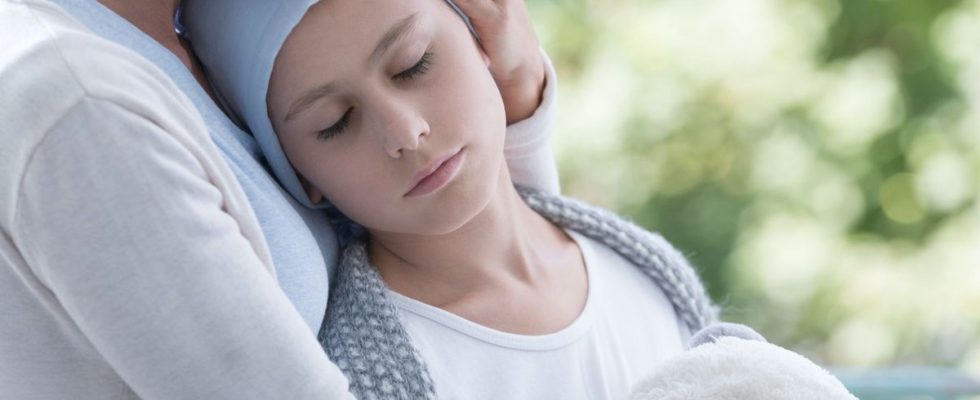Published on
Updated
Reading 3 min.
in collaboration with
Ivan Pourmir (medical oncologist)
A London pediatric nurse was alarmed when she noticed her own teenage daughter shared symptoms with the children with leukemia she saw every day. A realization that undoubtedly saved his daughter’s life.
Angela Whooley, a pediatric nurse working in a London hospital, is used to working with children with cancer. It is even the heart of his profession. But what she didn’t expect to experience was to discover the same symptoms of leukemia in her 16-year-old daughter. A difficult family affair to manage, but which nonetheless allowed the young girl to be treated in time.
Mother recognizes symptoms
It all started 6 years ago, when Megan Whooley, then 16 years old, began to feel general malaise and to feel “zero at everything” in her words. Her mother doesn’t worry, it’s just teenage worries, nothing more. “But after about a week, I noticed that she was pale and had a few bruises. I confided to my colleagues my fears that it was something more sinister, because all of its symptoms were those we saw in children diagnosed with leukemia.”
The nurse sees correctly: “The day the GP called and said there was something wrong with her blood and he wanted to see her urgently, I knew we were dealing with something serious. severe”.
Megan is diagnosed with acute lymphoblastic leukemia. And the world falls apart for his parents.
A discovery that allowed her daughter to continue her life
The story does not end there: Megan is then transferred to St George Hospital Pinckney Ward in London, in the same department where her mother works. She stayed there for six weeks during her chemotherapy. Angela then takes a year off and does not take part in Megan’s care when she is hospitalized. “Meg was treated like a person, listened to and allowed to make her own decisions” her mother rejoices. In their place as parents only, Megan’s father and mother encourage her day after day.
During her stay in the hospital, she continued to study to go to university. Now 23, Megan completed treatment in April 2019, just months before heading off to university and is currently working in her chosen path, education.
Her mother, who has since returned to her position as a nurse, also learned a lot from this period. “At first, when I came back to work, it was really difficult to listen to patients’ stories. Over time, I very occasionally reveal to families that I have been in their shoes and can completely understand what ‘they live”.
Leukemia symptoms to know
What are the symptoms to detect in a sick child? We asked the question to Dr. Ivan Pourmir, researcher in oncology and immunology.
“Acute leukemias are cancers of cells found in the blood, but which originate from bone marrow stem cells and therefore those used to produce cells of the immune system. These diseases affect the so-called lymphoid cell line, those which produce white blood cells. our expert explains.
When these become cancerous, they begin to proliferate in an uncontrolled manner. “The fact that the stem cells of these white blood cells proliferate in the bone marrow and in the blood will give symptoms and have repercussions which can present a short-term fatal risk for affected patients” specifies Dr. Pourmir.
This phenomenon thus causes 4 types of symptoms:
- Heavy bleeding : This prevents the proper production of other cells necessary for the production of platelets which are used to clot;
- Anemiasince this also prevents the generation of red blood cells;
- Fatigue and shortness of breathbecause the organs are in fact poorly oxygenated;
- Repeated infectionswhen immune cells are no longer produced correctly.
Dr. Pourmir specifies it all the same “It must nevertheless be added that acute leukemia remains a very rare pathology. Although leukemia is a predominant childhood cancer, it is not something that should seem threatening in every child. You must not be anxious, on constant alert.”
